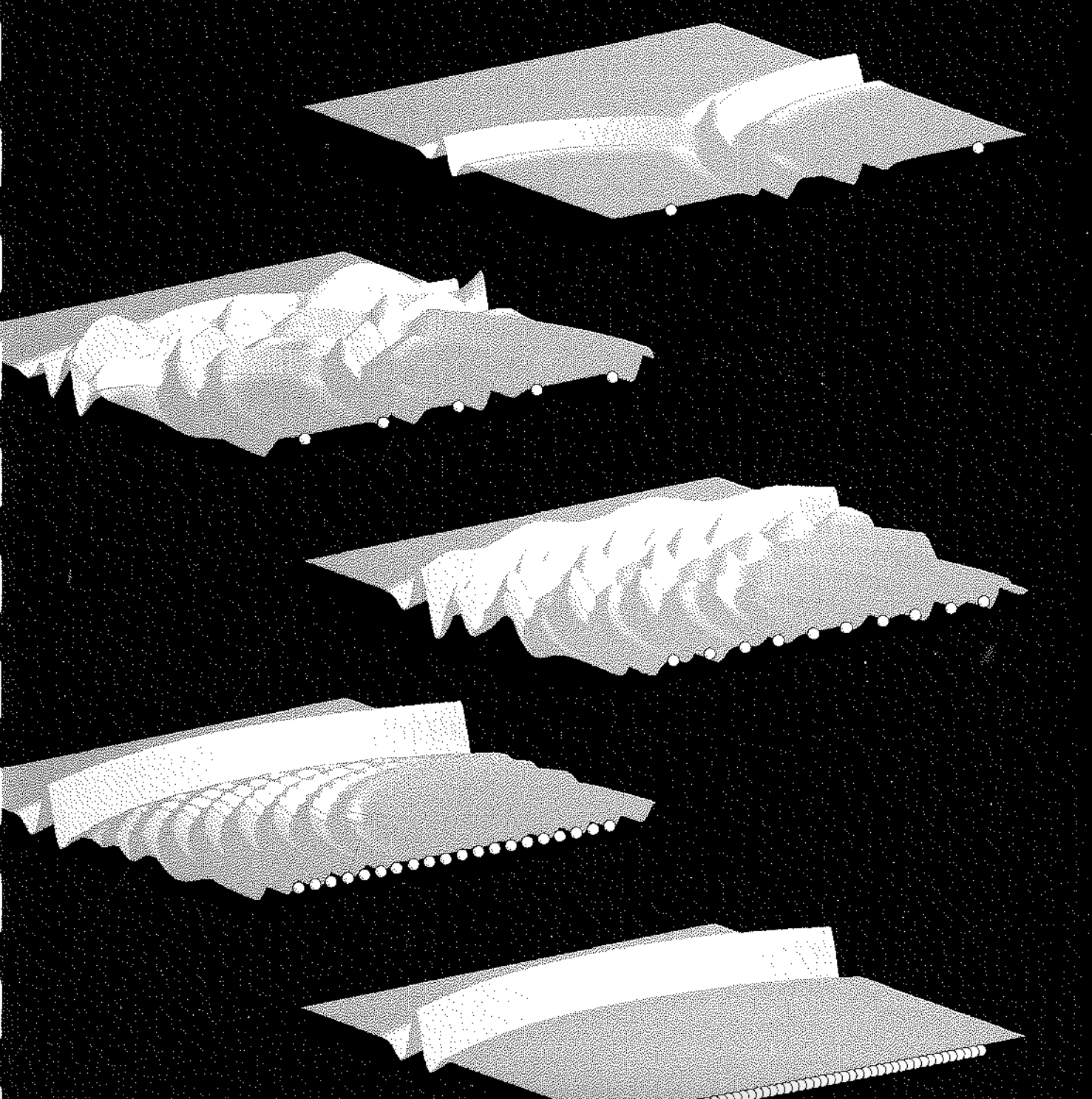
About Wave Field Synthesis
Wave field synthesis (WFS) is an audio spatialization technique that is able to reconstruct virtual sources of sound at different points in space. This done by combining the wavefronts of many small speakers in a linear array.
The listener will be able to perceive sound coming from a location in which there is no physical object, since the sound source is emanating from a location in free space. This also means that the listener can physically place themselves inside the source location, such that the source feels like it’s coming from inside their own body.
The pressure fields created by a linear array of speakers for various types of sources. The one I use most often in my projects is the point source situated inside of the listening area.This technology works by choosing a desired pressure field equation that would be created by the virtual sound source, for example a point source sending out spherical waves in a room. From this, a driving and directivity function is evaluated for each speaker in the array such that the pressure field can be created.
WFS is based off of Huygens Principle, which states that a wavefront from a source can be perfectly reconstructed if an infinite number of infinitesimally small sources of the same nature are placed along that wavefront. Obviously, this is not possible to do, since speakers are discrete objects and will have a discrete spacing between them. Aliasing occurs as a result of this, but it can be predicted based off of the speaker spacing.
Huygen’s PrincipleExample of source reconstruction using the linear array. Each speaker is a delayed or attenuated version of the original sourceThe software used in all of my wave field synthesis work is IRCAM’s Spat5 suite inside of Max MSP. It does realtime calculations for driving and directivity for each speaker in the array, such that source can be quickly reconstructed and moved at will.
Demo of the Spat5 suite used for my 24 channel array. The weighting of each speaker channel changes as the sound source (source 2) is moved around.“Wave Field Synthesis : A Brief Overview.” IRCAM Wave Field Synthesis-Homepage, IRCAM Room Acoustics Team, 5 Oct. 2004, http://recherche.ircam.fr/equipes/salles/WFS_WEBSITE/Index_wfs_site.htm. 

